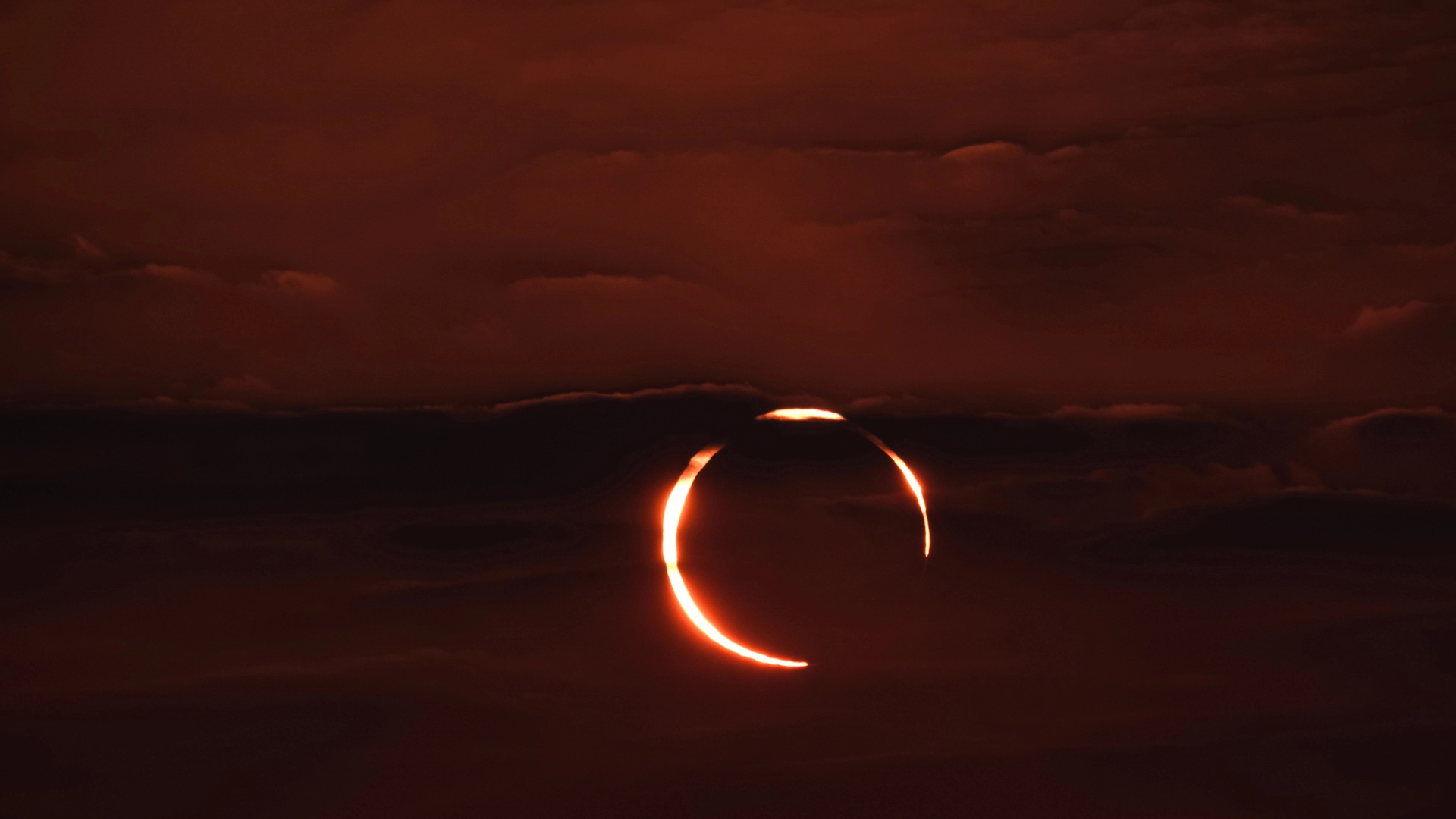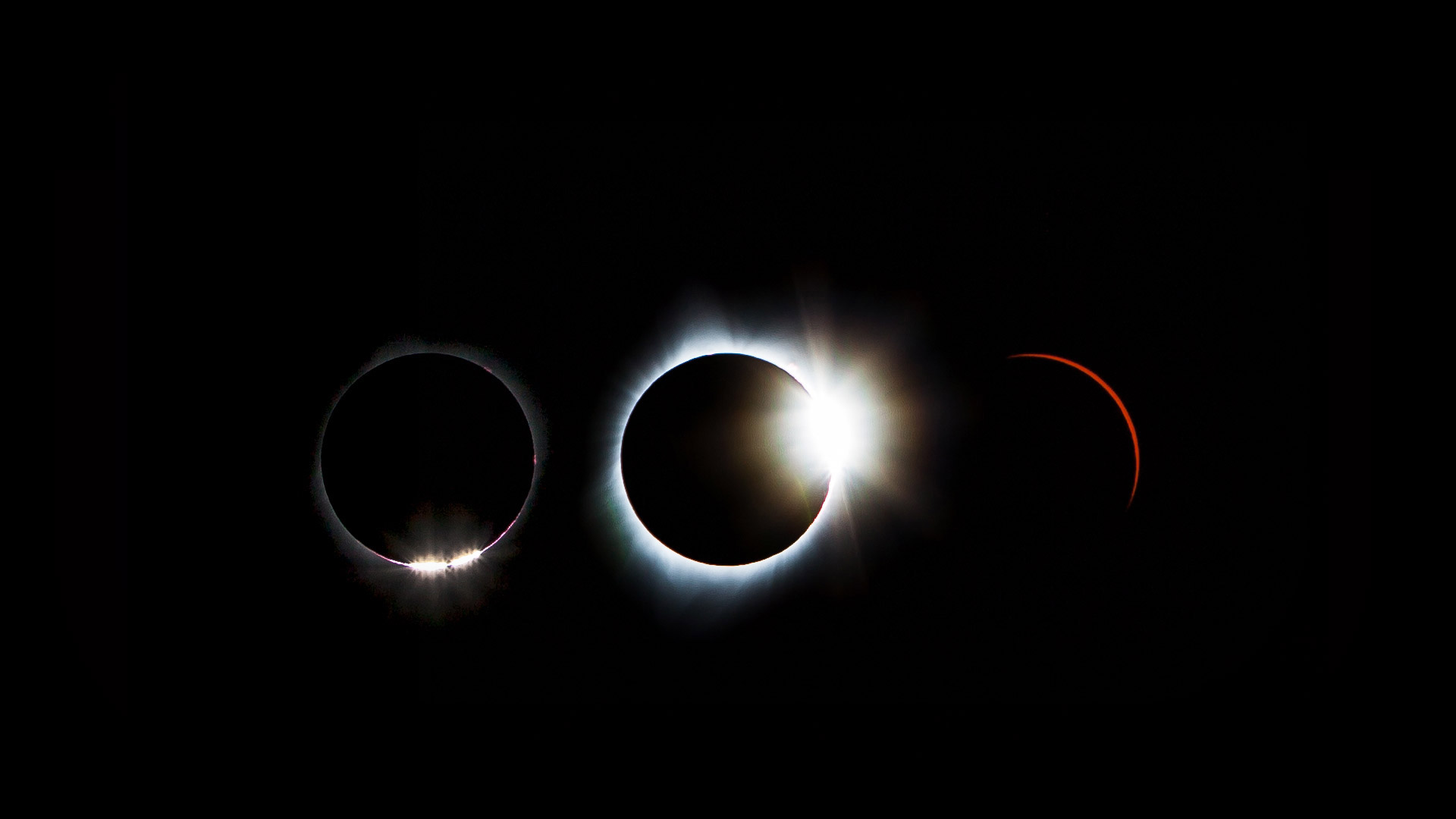"火环”日环食,多哈,卡塔尔 'Ring of fire' annular solar eclipse, Doha, Qatar (© Sorin Furcoi/Getty Images)

"火环”日环食,多哈,卡塔尔 'Ring of fire' annular solar eclipse, Doha, Qatar (© Sorin Furcoi/Getty Images)
它燃烧,燃烧,燃烧 And it burns, burns, burns
“火环”日环食
天文爱好者和科学家们都在为今天倒计时:日环食即将到来,美洲的天空将变得暗淡无光!当月球运动到太阳和地球中间,三者正好处在一条直线上,月球就会挡住太阳射向地球的光,然后月球身后的黑影正好落到地球上,这时就会发生日食现象。但为什么今天的日食会有所不同呢?那是因为月球的轨道是椭圆形的,今天的月亮将运行到离地球最远的位置上。届时,月亮将变得更小,太阳的光辉也会因此透射进来,形成一个像"火环"一样的光环。我们在图上看到的就是2019年发生在卡塔尔多哈的日环食现象,这一景象将从今天开始在美国出现,一路从俄勒冈州前往德克萨斯州。然后,它将继续前往中美洲,并在南美洲结束旅程。虽然"火环"只能在特定的路径上才能看到,但在美国的50个州的部分地区也可以看到部分日食。如果你有幸看到这场“日食秀”,请务必小心。如果没有专门的护目设备,请不要直视太阳。
'Ring of fire' solar eclipse
Sky gazers have been counting down to today: a 'ring of fire' annular solar eclipse is here to darken the skies over the Americas! Solar eclipses happen when the moon passes between the sun and Earth, casting parts of Earth into shadow. In an annular solar eclipse, a halo effect is created when the moon blocks out most but not all, of the sun's light. An annulus—or ring—of light remains visible. Seen here from Doha, Qatar, in 2019, the phenomenon will appear today over the United States—traveling from Oregon to Texas before continuing to Central America and ending in South America. While the 'ring of fire' is visible only in certain areas, partial eclipses will grace parts of all 50 states.
For those fortunate enough to live on the path of this cosmic show, be cautious. Do not look directly at the eclipse without specialized eye protection. Don't hesitate to make travel plans to see it, as the US will have to wait until 2039 for the next such event.
2017年8月21日的一组日食镜头 Solar eclipse sequence from August 21, 2017 (© Lindsay Daniels/Tandem Stills + Motion)

2017年8月21日的一组日食镜头 Solar eclipse sequence from August 21, 2017 (© Lindsay Daniels/Tandem Stills + Motion)
Sequential images of a total solar eclipse
A total solar eclipse is visible today across northern Chile and Argentina. To those lucky observers in South America, this awesome event will look much as it does in our homepage image today, which is a composite of images taken during the Great American Eclipse of 2018.
Just how does the moon perfectly blot out the sun? Through an amazing coincidence, the sun is both 400 times larger than the moon, and also 400 times further away. Therefore, periodically, when the sun, moon, and Earth are aligned just right, the moon can perfectly obscure the sun as seen from the surface of Earth in a total eclipse. But, unlike the sun, the moon is not a smooth sphere; therefore, in the last few moments before the eclipse reaches totality, we see Baily's Beads. In 1836, English astronomer Francis Baily was the first to explain that the phenomenon is created by sunlight passing between the mountains and through the canyons of the moon. Some folks also refer to it as the diamond ring effect. But whatever you call it, it's undeniably brilliant.